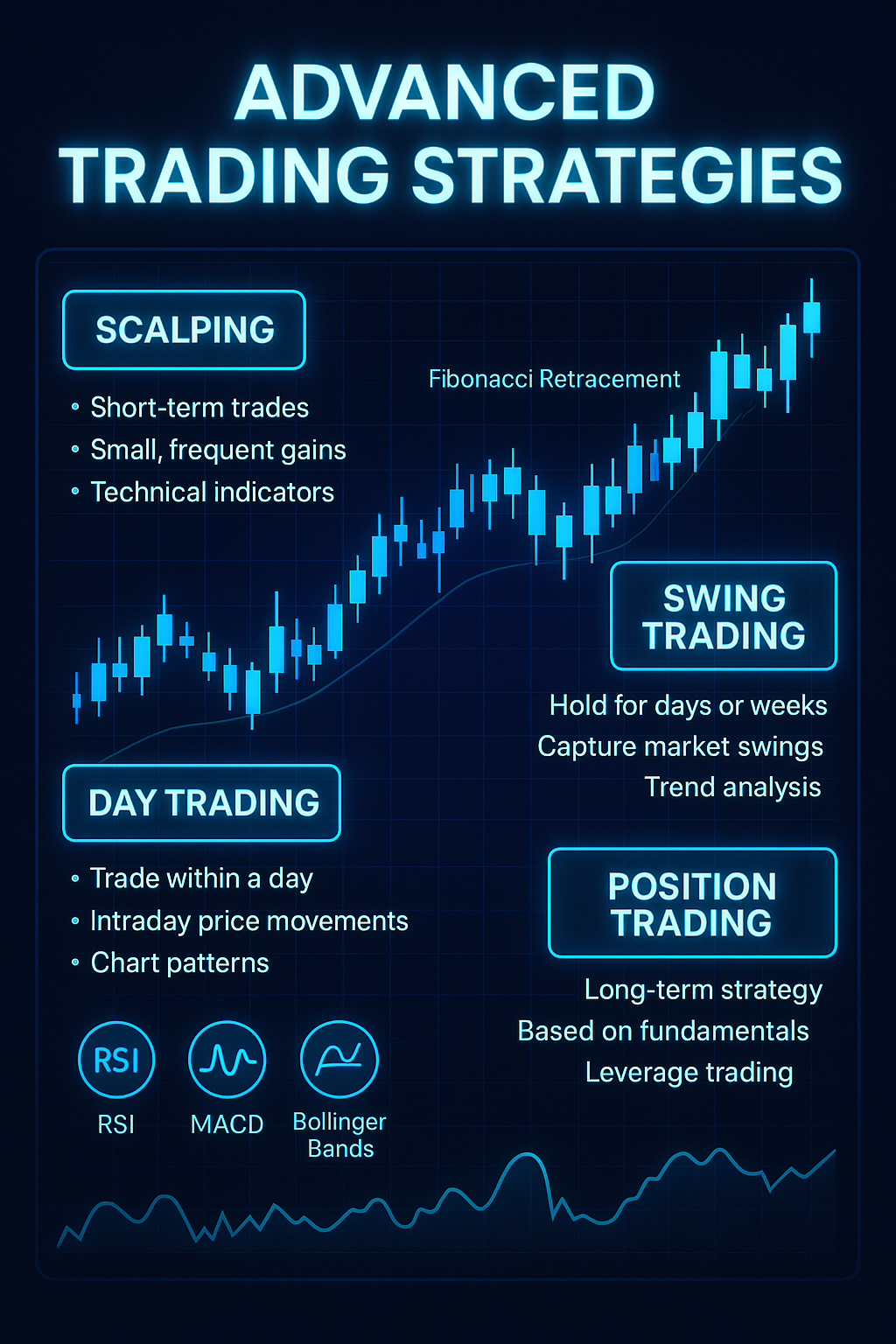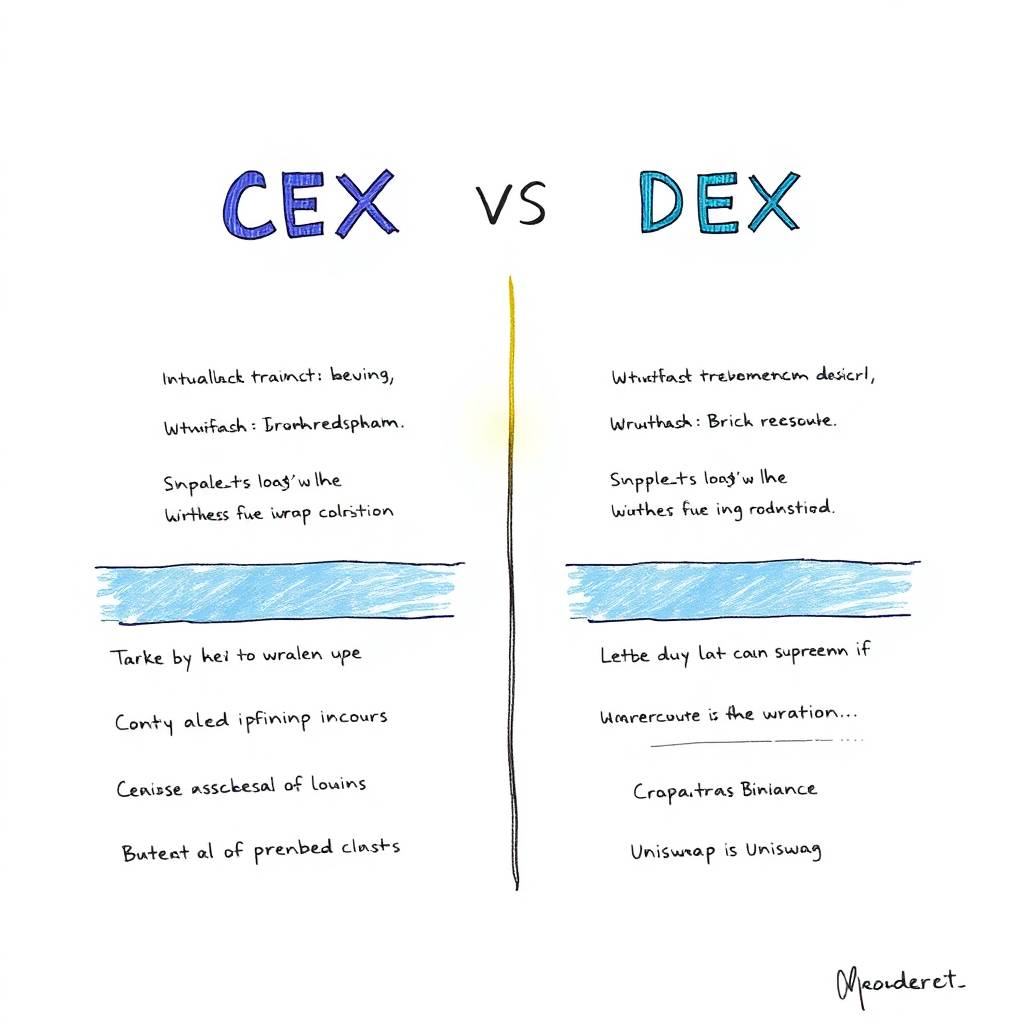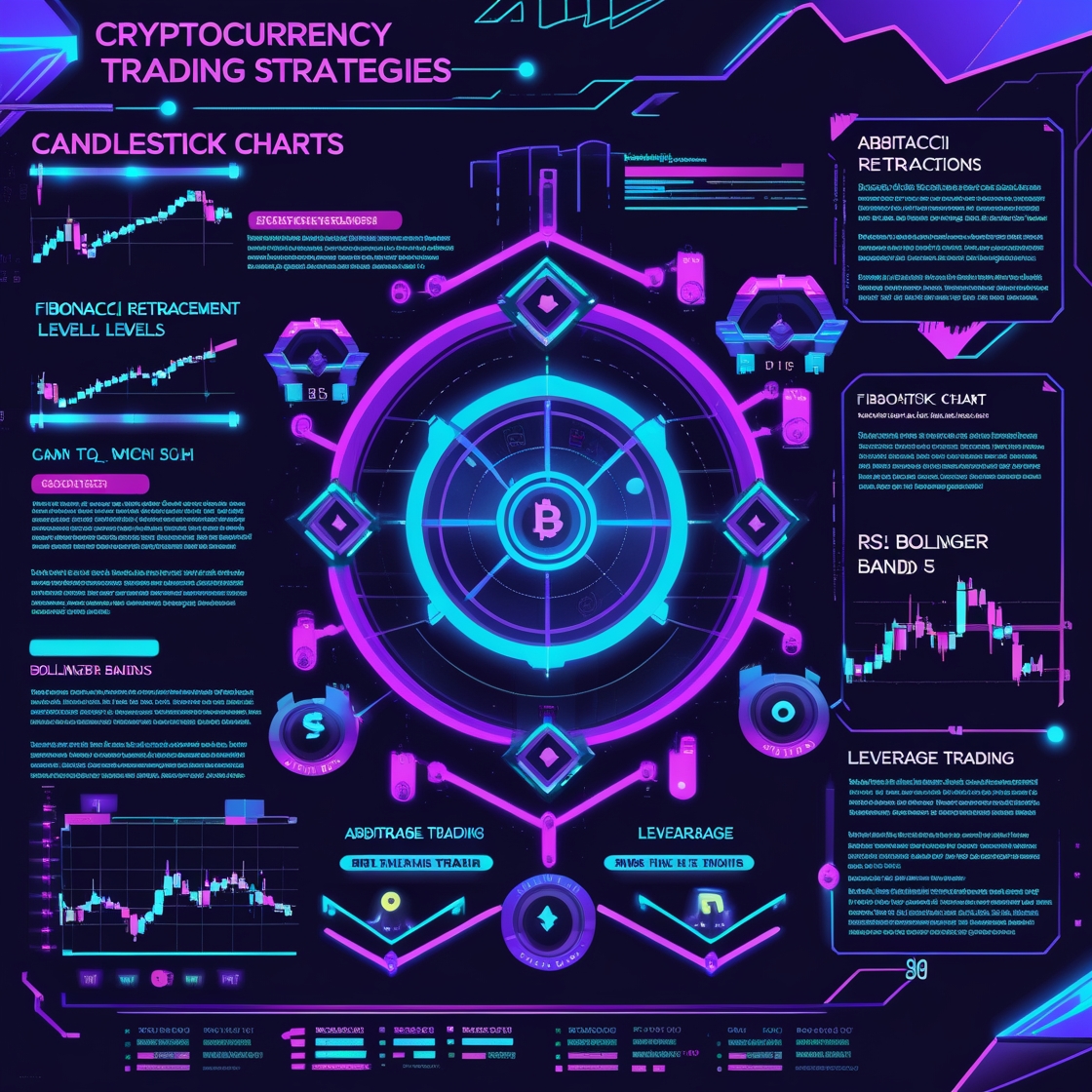
Comprehensive Guide to Cryptocurrency Exchanges: CEX vs. DEX and Advanced Trading Strategies
Introduction
Cryptocurrency trading has evolved significantly over the years, with centralized exchanges (CEX) and decentralized exchanges (DEX) offering different trading experiences. Understanding their differences, advantages, and risks is crucial for traders. Additionally, mastering advanced trading strategies can help maximize profits and minimize losses.
This guide will provide an in-depth look into CEX and DEX, their key differences, pros and cons, and advanced trading strategies to help you navigate the crypto market efficiently.
 1. Understanding Cryptocurrency Exchanges
1. Understanding Cryptocurrency Exchanges
A cryptocurrency exchange is a platform that allows users to buy, sell, and trade digital assets. These exchanges serve as intermediaries, either centralized (CEX) or decentralized (DEX), each catering to different user needs.
What is a Centralized Exchange (CEX)?
A centralized exchange (CEX) is an online platform operated by a company that acts as an intermediary between buyers and sellers. Users deposit funds into their exchange accounts, and the exchange facilitates trades.
Examples of Popular CEXs:
- Binance
- Coinbase
- Kraken
- KuCoin
- OKX
Key Features of CEXs:
- High liquidity and fast trade execution
- Advanced trading tools (margin trading, futures, staking, etc.)
- Fiat-to-crypto trading support
- Regulatory compliance and security measures
What is a Decentralized Exchange (DEX)?
A decentralized exchange (DEX) is a peer-to-peer (P2P) platform that allows users to trade directly from their wallets using smart contracts. DEXs eliminate intermediaries, giving users complete control of their funds.
Examples of Popular DEXs:
- Uniswap (Ethereum-based)
- PancakeSwap (Binance Smart Chain)
- dYdX (for margin trading)
- SushiSwap
- Curve Finance
Key Features of DEXs:
- No third-party control (self-custody of funds)
- Smart contract-driven transactions
- Anonymous trading (no KYC)
- Lower fees compared to CEXs
 2. Key Differences Between CEX and DEX
2. Key Differences Between CEX and DEX
| Feature | Centralized Exchange (CEX) | Decentralized Exchange (DEX) |
|---|---|---|
| Control | Controlled by a central entity | Fully decentralized, no intermediaries |
| Security | Higher risk of hacking & regulatory shutdowns | More secure due to self-custody |
| Liquidity | High liquidity & faster trades | Lower liquidity & occasional slippage |
| Fees | Higher trading fees due to services offered | Lower fees, but gas fees may apply |
| Anonymity | Requires KYC/AML verification | No KYC, full anonymity |
| User Experience | Beginner-friendly interface | Complex & requires blockchain knowledge |
| Regulation | Governed by financial authorities | Mostly unregulated |
Both CEX and DEX have their own advantages and disadvantages. CEXs are better for beginners due to their ease of use, while DEXs appeal to users who prioritize privacy and decentralization.
 3. Advanced Trading Strategies for Crypto Traders
3. Advanced Trading Strategies for Crypto Traders
To maximize profits and minimize losses, traders use various strategies. Here are some of the most effective ones:
3.1. Scalping
Scalping involves making multiple small trades within a day to capitalize on minor price fluctuations. This requires:
- High trading volume
- Fast execution and low latency
- Market monitoring and technical indicators (e.g., RSI, MACD)
🔹 Best for: Experienced traders using high-frequency trading bots.
3.2. Arbitrage Trading
Arbitrage involves buying a cryptocurrency from one exchange at a lower price and selling it on another exchange at a higher price.
Types of Arbitrage:
- Spatial Arbitrage: Buying from one CEX and selling on another CEX/DEX.
- Triangular Arbitrage: Exploiting price differences between three trading pairs within the same exchange.
🔹 Best for: Traders who can monitor multiple exchanges simultaneously.
3.3. Swing Trading
Swing trading involves holding assets for days or weeks to profit from medium-term price movements.
Key tools for swing trading:
- Fibonacci retracement (identifies support & resistance)
- Bollinger Bands (measures volatility)
- Moving Averages (indicates trends)
🔹 Best for: Traders with patience and strong technical analysis skills.
3.4. Margin & Leverage Trading
Margin trading allows traders to borrow funds to increase their position size. Leverage (e.g., 10x, 50x) amplifies both profits and losses.
💡 Risk Management: Always use stop-loss orders to prevent liquidation.
🔹 Best for: Advanced traders with high risk tolerance.
3.5. Automated Trading (Bots & AI Strategies)
AI-powered trading bots can execute strategies without manual intervention. Bots use predefined rules based on:
- Trend-following indicators
- Market sentiment analysis
- Arbitrage execution
🔹 Best for: Traders looking for passive income opportunities.
4. How to Choose Between CEX and DEX for Trading
Choosing between a CEX or DEX depends on:
- Trading Frequency: If you trade daily, CEX is better due to high liquidity.
- Security Concerns: If you prioritize self-custody, DEX is safer.
- Anonymity Needs: If you want privacy, DEX does not require KYC.
- Ease of Use: Beginners should start with CEX before moving to DEX.
✅ Best for Beginners: CEX (Binance, Coinbase)
✅ Best for DeFi Enthusiasts: DEX (Uniswap, PancakeSwap)
 5. Common Risks and How to Mitigate Them
5. Common Risks and How to Mitigate Them
A. Hacks & Security Breaches
- CEX Risk: Exchange hacks (e.g., Mt. Gox, FTX collapse)
- DEX Risk: Smart contract exploits (e.g., rug pulls)
✅ Solution: Store assets in hardware wallets like Ledger or Trezor.
B. Market Manipulation (Pump & Dump Schemes)
- Avoid small-cap coins with low liquidity.
- Research projects before investing.
✅ Solution: Use CoinMarketCap and CoinGecko to verify liquidity & market depth.
C. Regulatory Risks
- Governments may ban or regulate CEXs (e.g., Binance restrictions in certain countries).
- DEXs are harder to regulate but could face compliance measures.
✅ Solution: Stay updated with crypto regulations in your country.
 Conclusion
Conclusion
Both CEX and DEX have their own advantages, and the choice depends on your trading style, security concerns, and liquidity needs. Mastering advanced trading strategies such as scalping, arbitrage, swing trading, and AI trading can significantly enhance your success in crypto trading.
Key Takeaways:
✅ CEX is beginner-friendly, with high liquidity and regulatory compliance.
✅ DEX offers more privacy but requires more technical knowledge.
✅ Advanced trading strategies can maximize profits but also come with risks.
✅ Security and risk management are crucial for long-term success.
💡 What’s Next?
- Join crypto trading communities to learn more.
- Follow market trends and on-chain analytics.
- Test your trading skills with demo accounts before going live.
🔥 Are you trading on a CEX or DEX? Which strategy has worked best for you? Let us know in the comments! 🚀
